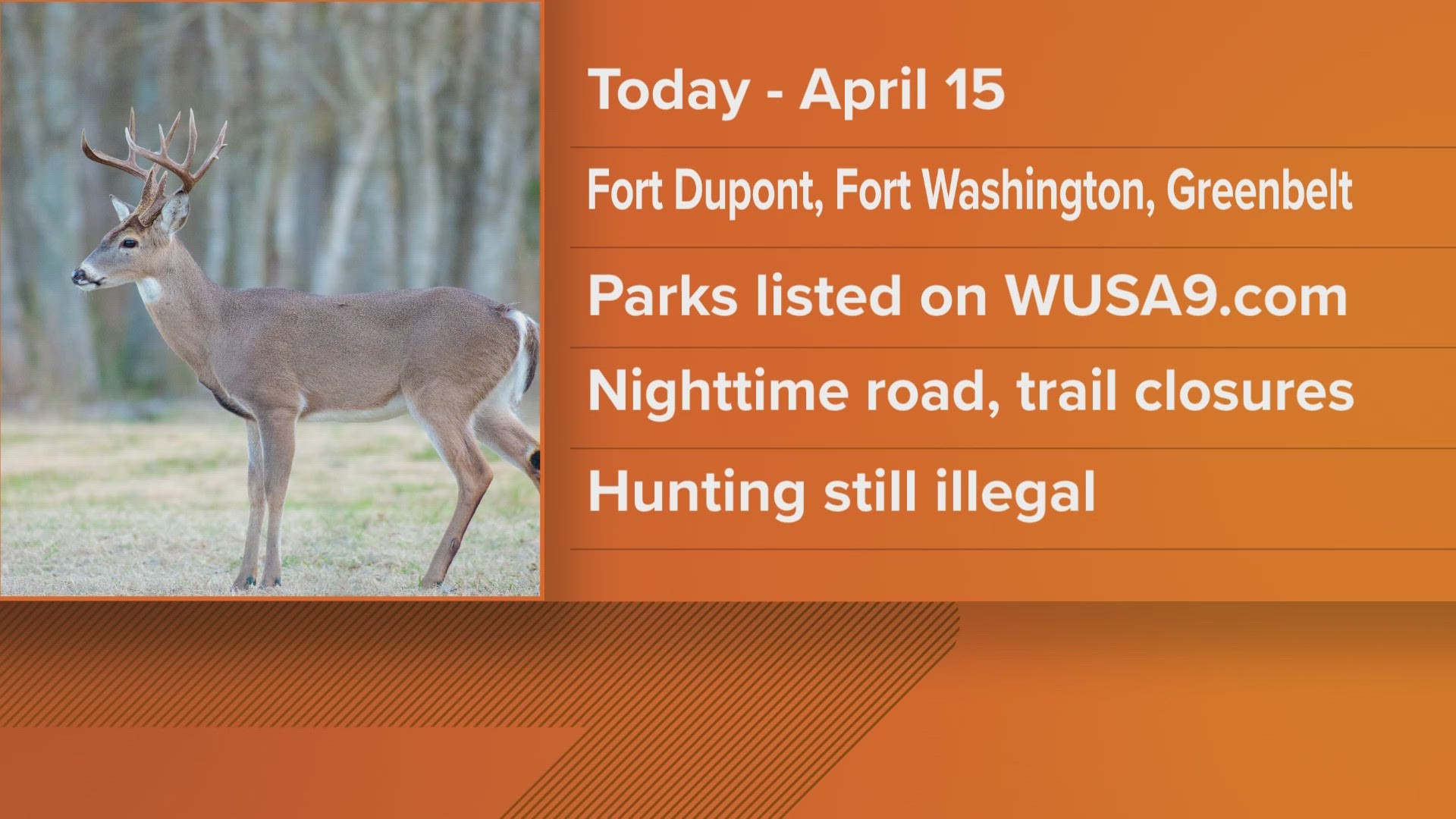WASHINGTON — The National Park Service (NPS) will be reducing deer populations at some national parks in Washington, D.C. and Maryland within the first four months of the new year.
Between Jan. 2 and April 15, NPS will be doing this at Fort Dupont, Fort Washington, and Greenbelt parks in and effort to protect and restore native plants and help the forests.
Safety measures will be in place to protect park visitors, as well as neighbors, during the operations. Under the direction of NPS, highly trained firearms experts, who are experienced in conducting wildlife reduction operations, will work at night when the parks are closed to the public. Staff will be posted during temporary night-time road and trail closures for the safety of others during the activities.
Commuters, including cyclists, are advised to seek alternative routes.
NPS says that over the past 20 years there has been an overabundant population of white-tailed deer that have damaged forest regeneration in areas across Maryland and D.C. The NPS initiated a public process to create a plan, which was finalized in 2022, calling for reducing the deer populations to support long-term protection of plants and to promote a healthy and diverse forest. The park's Management Plan/Environmental Assessment includes the following parks:
Maryland: Fort Washington Park, Fort Foote, Piscataway Park, Oxon Cove Park, Harmony Hall, Greenbelt Park, Baltimore-Washington Parkway and Suitland Parkway.
Washington, D.C.: Anacostia Park, Kenilworth Park and Kenilworth Aquatic Gardens, Fort Mahan, Fort Dupont, Fort Davis, Fort Chaplin, Fort Stanton, Fort Ricketts, Fort Greble, Battery Carroll and Shepherd Parkway.
"Research has shown that vegetation damage occurs when deer populations exceed 20 per square mile," NPS said in a news release. "Without long-term management, deer populations would quickly rebound and again eat tree seedlings and other young plants."
The plan is for NPS to monitor how well the plants are growing with fewer deer, and the findings will help them know what is best for ongoing deer management. During this process, they will also donate all suitable meat from reduction activities to local food banks.

